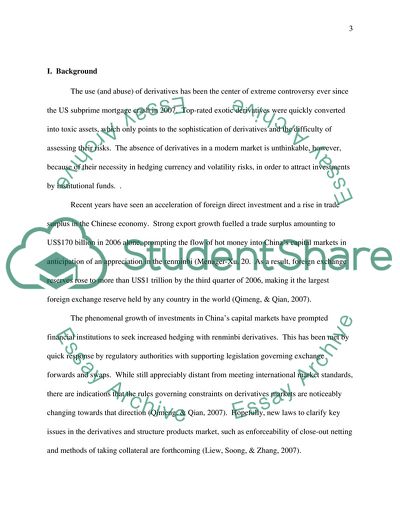Cite this document
(Chinas Derivatives Market Research Paper Example | Topics and Well Written Essays - 2000 words, n.d.)
Chinas Derivatives Market Research Paper Example | Topics and Well Written Essays - 2000 words. Retrieved from https://studentshare.org/marketing/1735716-optimal-financial-derivatives-investment-in-term-of-development-in-chinas-derivatives-market
Chinas Derivatives Market Research Paper Example | Topics and Well Written Essays - 2000 words. Retrieved from https://studentshare.org/marketing/1735716-optimal-financial-derivatives-investment-in-term-of-development-in-chinas-derivatives-market
(Chinas Derivatives Market Research Paper Example | Topics and Well Written Essays - 2000 Words)
Chinas Derivatives Market Research Paper Example | Topics and Well Written Essays - 2000 Words. https://studentshare.org/marketing/1735716-optimal-financial-derivatives-investment-in-term-of-development-in-chinas-derivatives-market.
Chinas Derivatives Market Research Paper Example | Topics and Well Written Essays - 2000 Words. https://studentshare.org/marketing/1735716-optimal-financial-derivatives-investment-in-term-of-development-in-chinas-derivatives-market.
“Chinas Derivatives Market Research Paper Example | Topics and Well Written Essays - 2000 Words”. https://studentshare.org/marketing/1735716-optimal-financial-derivatives-investment-in-term-of-development-in-chinas-derivatives-market.


